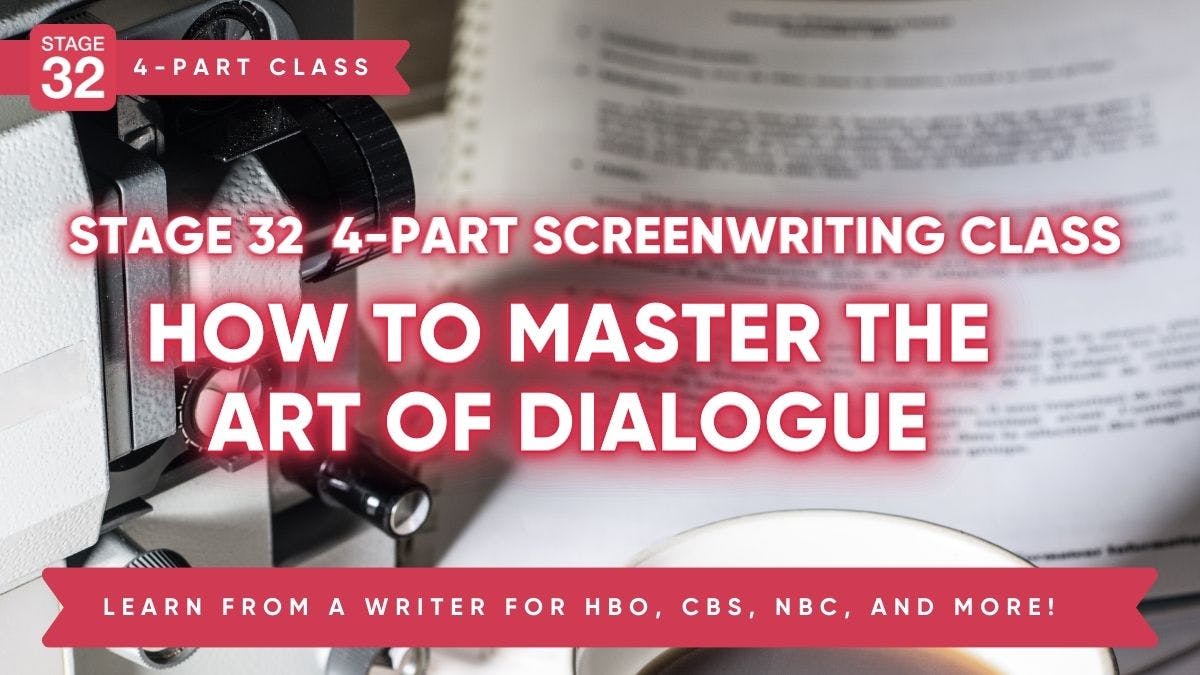

Summary

Learn how to write a compelling protagonist, antagonist & secondary characters
Get writing exercises to help hone your characters and a character trait worksheet!
PLEASE NOTE: Although this exclusive Stage 32 class is no longer live and the teacher is not available on email, we highly encourage you to do any assignments to get the most out of the educational experience.
Creating well-rounded and compelling characters is essential to crafting a screenplay that resonates with audiences. A strong protagonist drives the story forward, a well-developed antagonist creates the necessary conflict, and secondary characters add depth and richness to the narrative. Without these elements, your screenplay may lack the emotional impact needed to captivate viewers. This class will help you master the art of character development, ensuring that every character in your screenplay plays a vital role in telling your story.
However, many writers struggle to give their antagonists the same depth and complexity as their protagonists. It's easy to focus all your energy on the hero of your story, but neglecting your villain can lead to a one-dimensional antagonist that fails to challenge the protagonist in meaningful ways. Similarly, secondary characters often receive less attention, resulting in characters that feel flat or unnecessary. This exclusive Stage 32 class will address these common pitfalls and provide you with the tools you need to create a well-rounded cast of characters.
To help you hone your characters is Kate Sargeant, a seasoned TV writer with an impressive resume that includes shows like CASTLE, NCIS: NEW ORLEANS, and BLINDSPOT. Kate launched her career with a successful original play in London and has since built a reputation for creating engaging, multi-dimensional characters. With her wealth of experience in both writing and producing, Kate is uniquely qualified to guide you through the process of developing your screenplay’s characters.
In this 4-part Stage 32 class, you will delve into the intricacies of writing your protagonist, antagonist, and secondary characters. You'll start with learning what makes a protagonist compelling, then move on to creating a nuanced antagonist, followed by exploring the dynamic between the two. Finally, you'll give your secondary characters the attention they deserve. Each session will include practical exercises to help you apply the lessons to your own work. By the end of the 4 sessions, you’ll have a solid foundation for creating characters that bring your screenplay to life.
PRAISE FOR KATE:
"The webinar was great! I really enjoyed the way everything was organized and laid out." -Kathleen A.
"I had to leave the seminar before it was done so am very happy its recorded for later access. I was very impressed with Kate and her seminar. I thought she was an absolute powerhouse and came forward with an awesome structure and insightful information." -Sharon P.

What You'll Learn
Session 1: Writing Your Protagonist
What makes a protagonist compelling? Kate will discuss famous protagonists in both film and TV and explain why they stand out. She will give you a detailed summary of the character breakdown she uses for her protagonists. She will also share the journal writing exercise she does and why it is helpful. At the end of class you will get a Protagonist Character Trait Worksheet.
Assignment: Fill out your protagonist character trait worksheet and write a journal entry as your main character. *For this assignment, it is suggested you do it for one character but Kate does this for ALL her protagonists
Session 2: Writing Your Antagonist
A good antagonist creates conflict for your protagonist. But many times writers focus so much attention on their protagonists that the antagonist isn’t as layered and nuanced. The last thing we want is a one-dimensional antagonist. Which is why we are going to do the work to make sure this character has just as much backstory as the protagonist.
Assignment: Fill out your antagonist character trait worksheet and write a journal entry as this character
Session 3: Protagonist meets Antagonist
Now that you have developed your protagonist and antagonist – it’s time to let them meet on the page. It’s important to maintain unique identities for your characters as they interact with each other. Some things we will discuss: How do we make their voices sound different? How do we reveal information about them in dialogue? How do you bring their conflict to life and establish how they feel about each other in 2-3 pages?
Assignment: Write a scene between your protagonist and antagonist (Kate suggests that it’s the first scene they have together in your script)
Session 4: Writing Your Secondary Characters
Now that you’ve established your protagonist and antagonist – it’s time to give your secondary characters the same treatment. They may play smaller roles in your story but they still need to be compelling. Kate will show examples of secondary characters that have stood out in TV shows and features. She will explain how best to use these secondary characters to support your protagonist/antagonist and your overall story. This is also a great way to make sure that all your characters are necessary. If they don’t serve a purpose that pushes your story forward, this is the time to rethink or remove them.
Assignment: Fill out your secondary character trait worksheet for one or two of your characters and write journal entries for them
WHAT TO EXPECT:
-
This class is designed for beginner, intermediate and advanced students looking to learn the fundamentals of closing investor deals.
-
Each class is roughly two hours in duration and recorded on Zoom.
-
In addition to the presentation-style lessons, you will have writing exercises to hone your writing.
-
PLEASE NOTE: Although this exclusive Stage 32 class is no longer live and the teacher is not available on email, we highly encourage you to do any assignments to get the most out of the educational experience.
Who Should Attend
- All levels of directors (advanced, intermediate and beginner) looking to learn better characters
- All levels of writers (advanced, intermediate and beginner) looking to learn better characters
- Producers looking to learn better characters
- Actors looking to learn better characters
Executive

Kate Sargeant launched her writing career when she wrote, directed, and produced her original play REVOLVING DOOR in London. After its successful three-week run, Kate took her production on tour to the Edinburgh Festival Fringe, where it received rave reviews. Since returning to the states, she has been staffed on multiple shows, including CASTLE, CSI CYBER, NCIS NOLA, BLINDSPOT, among others. She most recently wrote a freelance episode of THE ROOKIE: FEDS on ABC.
She has also written, directed, and produced a few of her passion projects, including the short films CHANGING LANES, FACING LIFE, and ANOTHER FOREIGN CONCEPT. In addition, Kate launched an original web series that she wrote, directed, and produced called YOU CAN'T DO THAT ON THE INTERNET about our obsession with social media in the digital age. In 2020, Kate created a half-hour comedy series, VIRTUALLY SINGLE, which is streaming now.
Testimonials
PRAISE FOR KATE'S TEACHINGS:
"There was a lot of great information given as to what to expect when staffed in a writers room." -Louisa B.
"The webinar was great! I really enjoyed the way everything was organized and laid out. I do wish there was a little more time for the Q&A session as my questions didn't get answered. But overall it was excellent and very helpful." -Kathleen A.
"I had to leave the seminar before it was done so am very happy its recorded for later access. I was very impressed with Kate and her seminar. I thought she was an absolute powerhouse and came forward with an awesome structure and insightful information." -Sharon P.
People who bought this also bought










